Roll me over in the clover – – –
Something that comes up in every wanderer’s life is the side-hill. Sidehilling is an obnoxious necessity, a regretful circumstance born of trying to get from one place to another across inhospitable terrain. You’re not climbing or descending, you are going cross-wise to a hill and you are slanted WAY over, frighteningly so. The act of sidehilling causes a 4-wheel vehicle to tip aggressively to the side, and the obvious concern is that – – if the vehicle slants sufficiently – – it will simply roll over. And maybe over, and over, and over, if the hill is long enough.
Sometimes, it’s just a viciously off-camber trail that causes a roll-over, in which case the vehicle ends up flopping on its side and coming to an ignominious halt. For just such an eventuality, the tsars of the Expo provided a “class” on how to deal with a roll-over.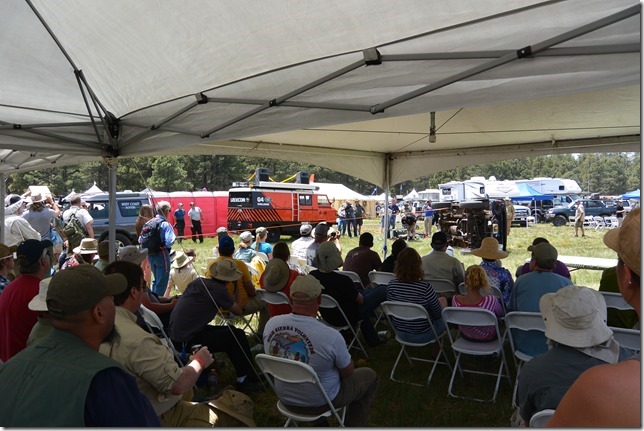
Quite a crowd showed up, and in fact the “instructors” (really demonstrators) provided a much-maligned Land Rover and proceeded to – – – roll it over. Right in front of all of us. It was actually quite a hoot. They rolled it and righted it several different ways, with a pretty decent narrative all along, and even the most jaded of us were entertained and educated.
Tow strap attached, the target (black Land Rover) is pulled sideways as if sidehilling.
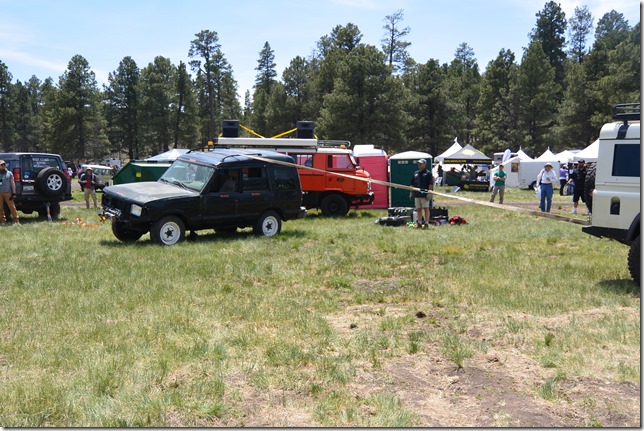
The guy puts a protractor on the hood to determine the angle at which it tips over (about 45 degrees).
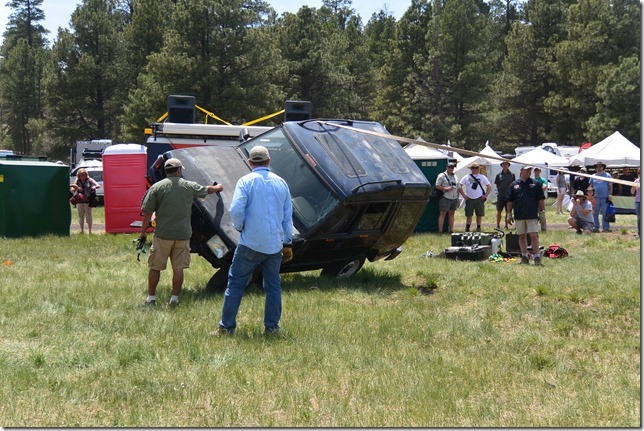
Whump!, there she goes. No big sound or explosion, just whump and quiet.
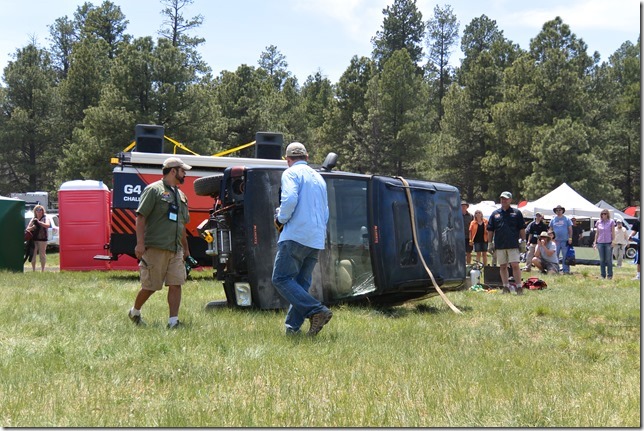
Now the recovery – – attach another tow strap from the other side and pull.
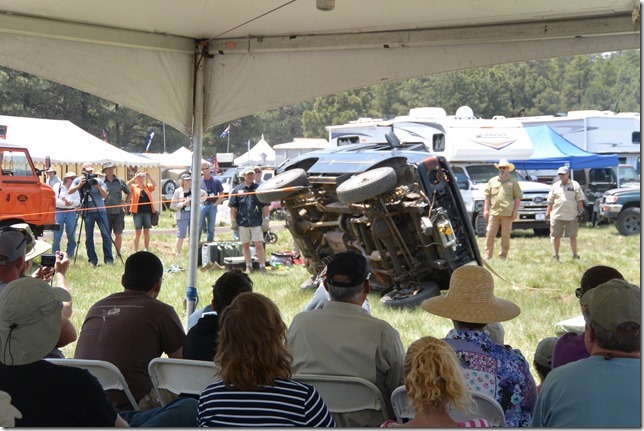
Et Voila! It’s back on its tires again. That driver’s side is dented – – but hardly crushed or destroyed.
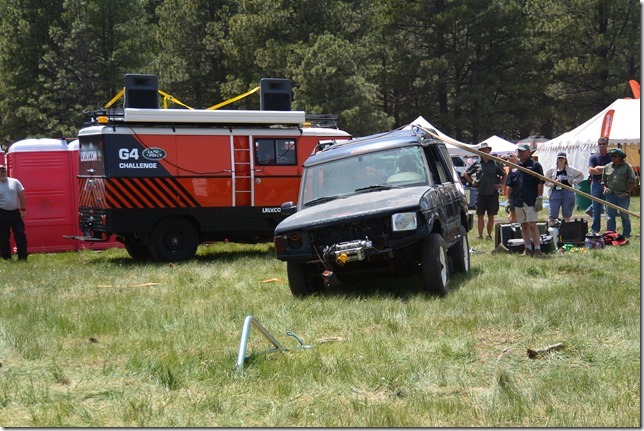
Okay, yank that puppy over on its side again. Yahoo.
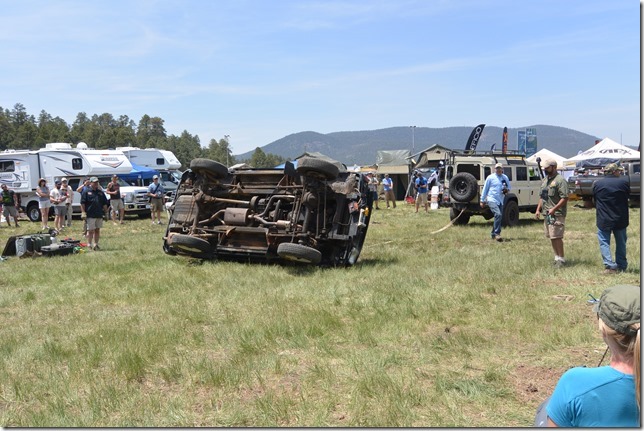
This time, let’s simulate having no other helper vehicle. Only maybe a nearby a tree or two. The rolled vehicle’s winch is strung to a self-burying anchor (or tree) and another tree (a vehicle for the demo). The cable makes a triangle, with the final end of it pulling on the vehicle’s own frame. Jackets and straps are attached to the winch cable so that it can be seen, and also to retard any snapping action if it should break.
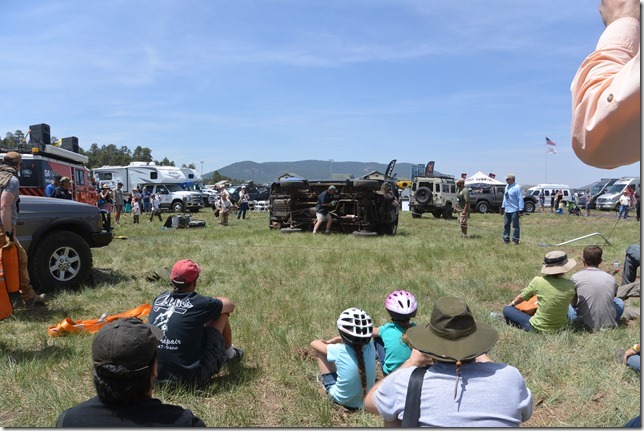
The winch pulls up slack and all segments tighten.
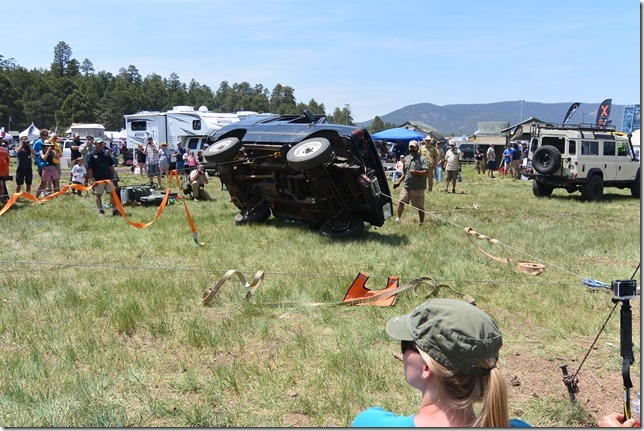
And here she comes again. Piece of cake. (These guys do this a LOT. YMMV)
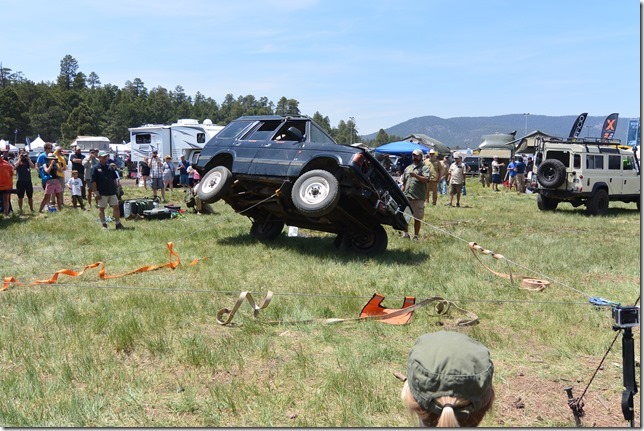
In the spirit of MythBusters, the demonstration gets into what happens if there’s a lot of weight up high. Does a roof-mounted load make the vehicle roll easier? Intuitively, the swaying top-loaded vehicle SEEMS to be a real liability. Alright, let’s measure it. First, let’s tie up about 200 pounds of water jugs and junk on the roof of the poor battered Land Rover.
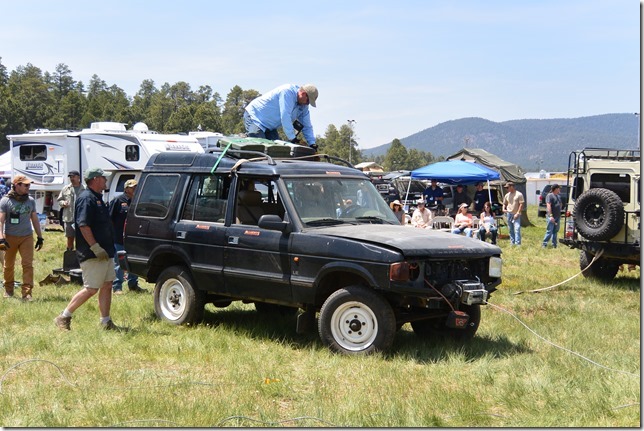
Next, pull that puppy sideways while measuring the angle. Does it flop over earlier than the same car with no top loading?
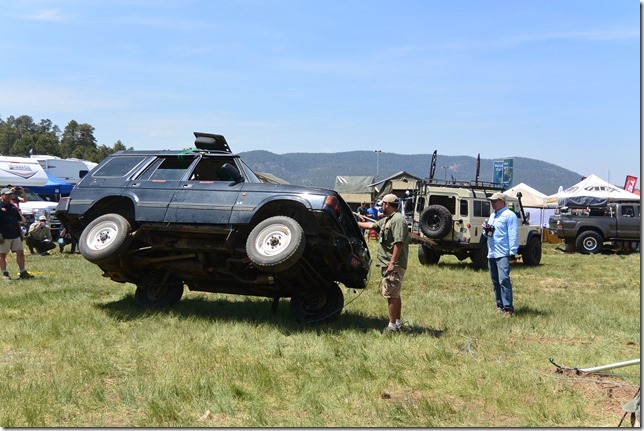
Not hardly. Maybe one degree of difference, like 44 degrees instead of 45 degrees. Fact is, there’s a lot of bottom-centered weight in one of these 4×4 chassis, and it dominates the equation.
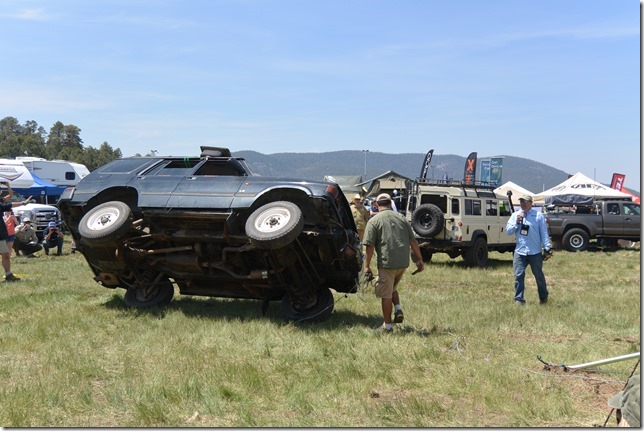
Here’s the badly-crushed (not) Land Rover after many, many roll-over demonstrations. It’s clearly battered, but hardly the end of the world.
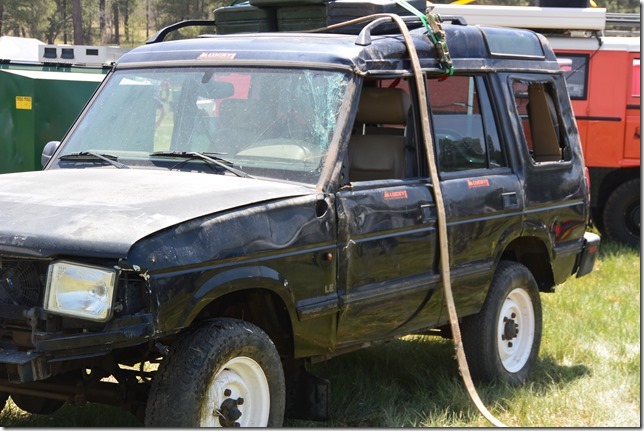
Takeaways from the demo:
- ALWAYS shut the motor off first if you roll it. Motors hate running sideways and can self-destruct.
- CAREFUL releasing your seat belt and getting out of the vehicle.
- SLOWLY think things through and pull it back upright. Life will go on, very well in most cases.
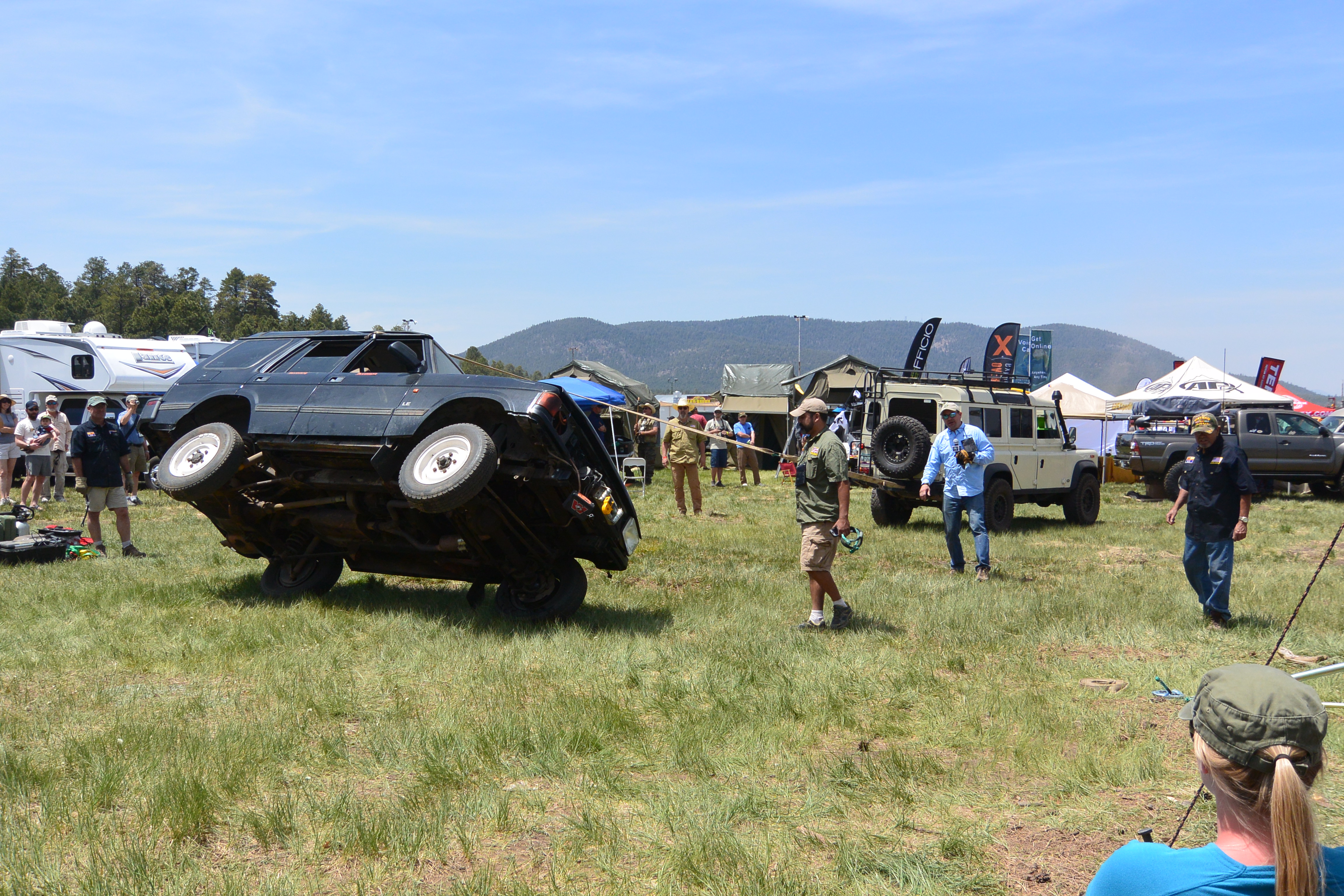
Comments
Roll me over in the clover – – – — No Comments
HTML tags allowed in your comment: <a href="" title=""> <abbr title=""> <acronym title=""> <b> <blockquote cite=""> <cite> <code> <del datetime=""> <em> <i> <q cite=""> <s> <strike> <strong>